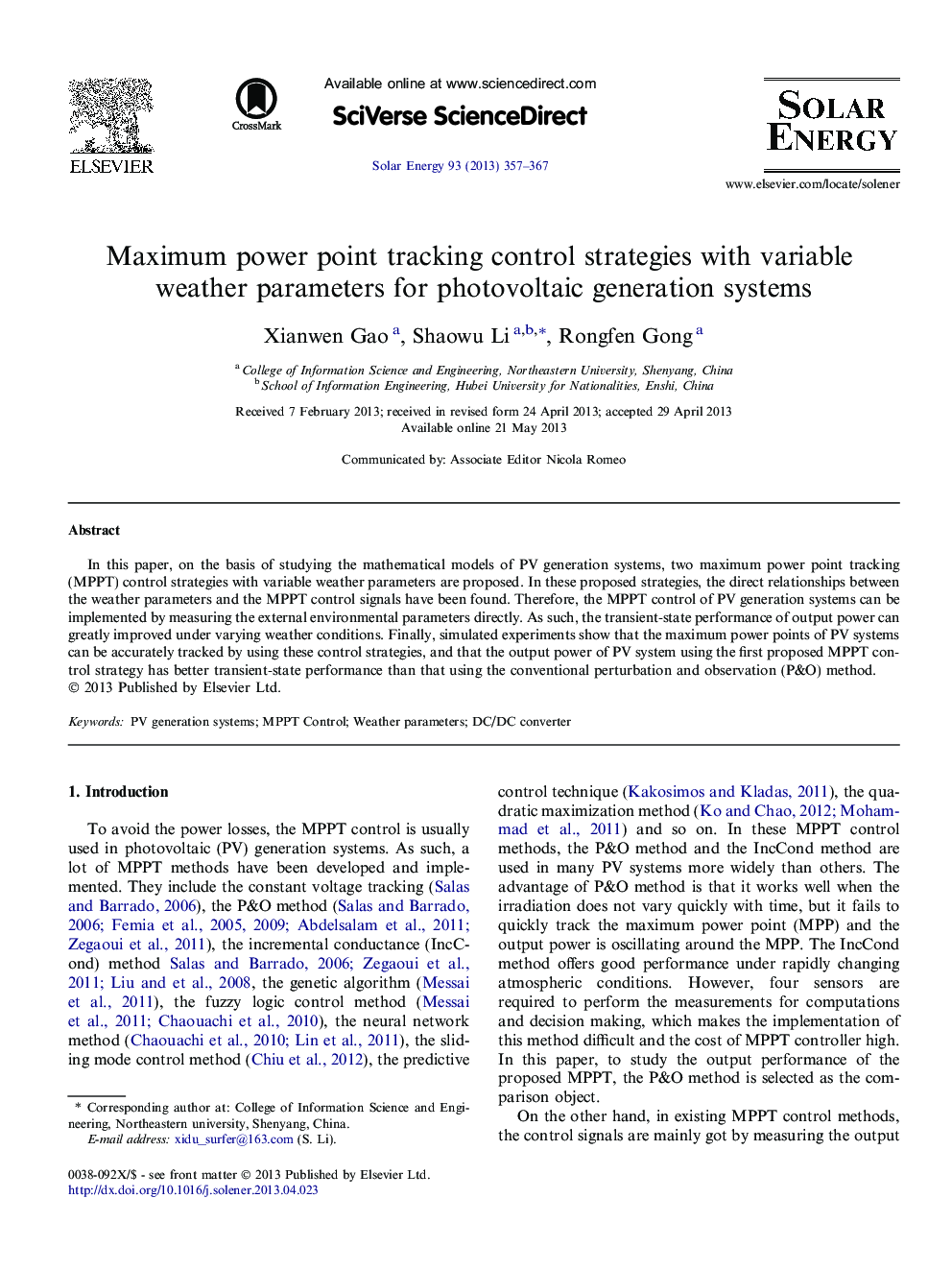| Article ID | Journal | Published Year | Pages | File Type |
|---|---|---|---|---|
| 1550273 | Solar Energy | 2013 | 11 Pages |
•Two MPPT methods are proposed from the input characteristics of PV systems.•These methods can greatly improve the transient-state performance of output power.•The direct relationships between the weather parameters and the control signals have been found out.•The integrated modeling of photovoltaic systems has been implemented.
In this paper, on the basis of studying the mathematical models of PV generation systems, two maximum power point tracking (MPPT) control strategies with variable weather parameters are proposed. In these proposed strategies, the direct relationships between the weather parameters and the MPPT control signals have been found. Therefore, the MPPT control of PV generation systems can be implemented by measuring the external environmental parameters directly. As such, the transient-state performance of output power can greatly improved under varying weather conditions. Finally, simulated experiments show that the maximum power points of PV systems can be accurately tracked by using these control strategies, and that the output power of PV system using the first proposed MPPT control strategy has better transient-state performance than that using the conventional perturbation and observation (P&O) method.
